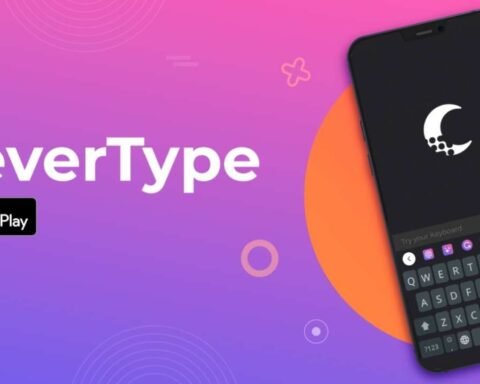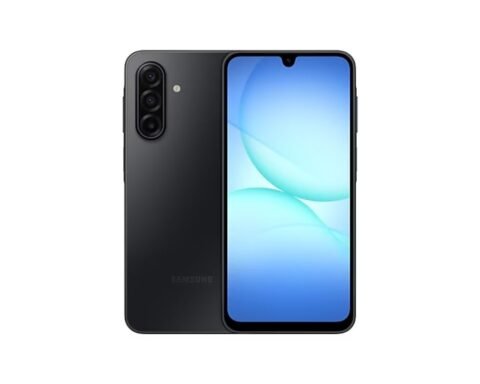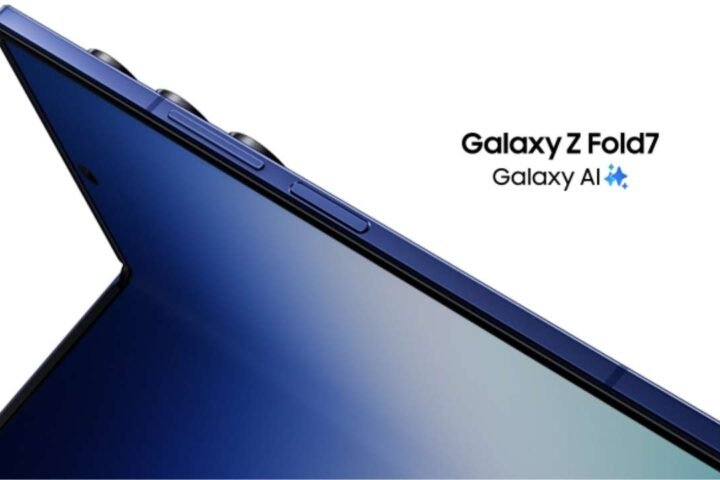The market for foldable smartphones has been growing steadily, with companies pushing the limits of design, durability, and performance. Google has made a lot of progress with its Pixel line, especially in the foldable category, where it is one of the leaders. The Google Pixel 10 Pro Fold, which will come out in 2025, is said to be a game-changing addition to the foldable category. It will build on what worked and what didn’t work with the Pixel Fold and Pixel 9 Pro Fold. This article goes into detail about the Pixel 10 Pro Fold’s expected features, design, performance, and impact, looking at why it might change what people expect from foldable smartphones.
A Short History of Google’s Journey with Foldable
The Pixel Fold was Google’s first foldable phone, released in 2023. It was a new idea, but it was also seen as a first-generation device with some problems. People didn’t like that it had big bezels and a screen that didn’t fold flat, which made it more of a proof-of-concept than a polished competitor to devices like the Samsung Galaxy Z Fold series. But Google quickly fixed these problems with the Pixel 9 Pro Fold in 2024. It had a sleeker design, a better hinge mechanism, and better performance, making it a strong competitor in the foldable space.
The Pixel 10 Pro Fold is set to take this evolution even further. It will be available on August 20, 2025, and sales will start on August 28. There are rumors that Google is working on a device that will not only compete with but also possibly surpass its competitors, such as the Samsung Galaxy Z Fold 7 and Honor Magic V5. These rumors include improvements in design, durability, and processing power.
Design and Display: Improving the Foldable Shape
The redesigned hinge on the Pixel 10 Pro Fold is one of the most important improvements. It should make the device thinner and stronger. The new hinge mechanism is said to make the phone thinner overall. When unfolded, it measures 155.2 x 150.4 x 5.3mm, which is slightly thicker than the Pixel 9 Pro Fold’s 5.1mm but possibly more durable because of better engineering. This hinge is thinner, which means the bezels can be smaller. This lets Google make the external cover screen bigger, from 6.3 inches to 6.4 inches.
The cover screen is a 6.4-inch OLED display with a refresh rate of 120Hz and a peak brightness of about 2,700 nits. It is meant to work perfectly when the phone is closed, giving you an experience that is almost the same as a regular flagship smartphone. The internal screen is still an 8-inch OLED panel with a 120Hz refresh rate and high resolution, which makes sure that visuals are bright and interactions are smooth when using multiple apps or watching videos. There is still a problem with the display crease, which is common in foldables, but the new hinge design may help hide it, which is one of the ongoing problems with foldable technology.
The Pixel 10 Pro Fold is expected to keep the “pill” style camera visor that was first seen on the Pixel 9 series. This will give it a unique look that sets it apart from other phones. The device comes in colors like Sterling Grey and Smoky Green. It probably has a high-quality build with Gorilla Glass Victus 2 for extra strength. The rumored IP68 rating for water and dust resistance is the real design standout, though. This would be the first time a foldable smartphone has had this rating.
IP68 Rating: A Breakthrough in Durability
The IP68 rating is probably the most exciting thing about the Pixel 10 Pro Fold. Because of how complicated their hinge mechanisms are, traditional foldables like the Pixel 9 Pro Fold (IPX8) and the Samsung Galaxy Z Fold 6 (IP48) have not been as dust-resistant as regular smartphones. The IP68 certification means that the Pixel 10 Pro Fold is completely protected from dust and can stay underwater for up to 1 meter for a few minutes. This upgrade in durability is a game-changer because it fixes a major flaw in foldables by keeping dust and sand from damaging the hinge or internal parts.
The Tensor G5 Advantage in terms of performance
The Google Tensor G5 chipset is at the heart of the Pixel 10 Pro Fold. This is a big change from previous Tensor chips, which were co-developed with Samsung and used Exynos architecture. According to reports, TSMC makes the Tensor G5 using a 3nm process. This should make it faster and use less power than the 4nm Tensor G4 in the Pixel 9 series. The chip has a CPU configuration with one Cortex-X4 prime core at 3.78 GHz, five Cortex-A725 performance cores at 3.05 GHz, and two Cortex-A520 efficiency cores at 2.25 GHz. It also has a PowerVR DXT-48-1536 GPU from Imagination Technologies.
The early Geekbench scores for the Tensor G5 (2,276 single-core and 6,173 multi-core) show that it may not be able to compete directly with top-tier chips like the Snapdragon 8 Elite or Dimensity 9400. However, it is a big improvement over the Tensor G4, with a 5% increase in single-threaded performance and a 36% increase in multi-core performance. This update should make the Pixel 10 Pro Fold better at handling tough tasks, especially AI processing on the device, which is a key part of Google’s smartphone strategy.
It is thought that the device will have 16GB of LPDDR5X RAM and storage options of 256GB or 512GB (using UFS 3.1, but there is hope for an upgrade to UFS 4.0). The Pixel 10 Pro Fold comes with Android 16 pre-installed. It will probably use the Material 3 Expressive design language, which will give users a new interface and advanced AI features powered by Google’s Gemini AI. These improvements should make multitasking, voice interactions, and processing on the device faster for things like editing photos and translating things in real time.
Camera System: Small Changes That Make a Big Difference
People have praised Google’s Pixel phones for their computational photography for a long time. The Pixel 10 Pro Fold is expected to continue this tradition, though with only minor hardware improvements. People say that the main camera will have a 50MP Samsung GN8 sensor, which is a small step up from the 48MP Quad PD sensor in the Pixel 9 Pro Fold. The ultrawide (10.5MP) and telephoto (10.8MP with 5x zoom) cameras are likely to stay the same, as are the two 10MP selfie cameras (one on the cover screen and one on the internal display).
The hardware may not change much, but Google’s software optimization is what makes it so good. Even though the sensors may not be as good as those in the Pixel 10 Pro or Pro XL, features like HDR+, Super Res Zoom, Night Sight, and Magic Eraser should still give you smooth, high-quality pictures. There are rumors that video stabilization will get a big upgrade. The Pixel 10 Pro Fold is said to offer gimbal-like performance without any extra hardware, which could make it a competitor to the iPhone’s video capabilities. The Pixel 10 Pro Fold could be a great choice for content creators because of this improvement and features like Video Boost.
Battery and charging could be better
The Pixel 10 Pro Fold’s battery life is still a possible weak point. The device is expected to have a 4,650mAh battery, which is similar to the one before it. This battery size is not very big compared to some competitors, especially Chinese foldables that have bigger batteries in thinner bodies. Charging speeds are also expected to stay low, with 21W wired and 7.5W wireless charging. This is slower than the faster charging speeds of devices like the OnePlus Open Fold.
Google’s work on the Tensor G5 and Android 16 should make the battery last longer, but the device’s small size may make it hard to do a lot of things at once or handle a lot of AI work. People who care most about battery life might not like this part very much, especially since an 8-inch internal display needs a lot of power.
Pricing and Positioning in the Market
One of the most interesting things people are saying about the Pixel 10 Pro Fold is that it might cost less. The Pixel 9 Pro Fold came out at $1,799, but reports say the Pixel 10 Pro Fold could cost $1,599, which is $200 less and would make it more competitive with other high-end foldables.
But things like possible tariffs on goods made outside the U.S. could affect the final price. If Google keeps or lowers the price while making big improvements, the Pixel 10 Pro Fold could appeal to more people and compete with Samsung’s Galaxy Z Fold series.
The Market and the Competition
The Pixel 10 Pro Fold is entering a very competitive foldable market. Samsung’s Galaxy Z Fold 7, Honor’s Magic V5, and other devices are all trying to get people’s attention. People say that the IP68 rating could make Google more durable, but Samsung’s earlier launch and strong brand loyalty in the foldable space make things harder for them. Chinese companies like Honor and OPPO are also pushing the limits of how thin and powerful batteries can be, which puts pressure on Google to come up with new ideas.
Google’s software ecosystem and AI abilities are what make it strong.
The Pixel 10 Pro Fold is a great choice for people who use Google services because it has features like Gemini AI, easy integration with Google services, and long-term software support (usually seven years of updates). The device’s ability to use Android 16’s advanced multitasking and AI-driven features could also make it stand out for people who want to be more productive.
In conclusion, this is a big step forward.
With a thinner hinge, IP68 durability, and the Tensor G5 chipset, the Google Pixel 10 Pro Fold is a big step forward in Google’s line of foldable phones. It may not change the camera system or battery capacity as much as some of its competitors, but its focus on durability, software optimization, and a possible price drop make it a strong choice in the foldable market. The Pixel 10 Pro Fold could not only compete with Samsung’s dominance, but it could also set a new standard for what foldable smartphones can do if Google keeps its promises.
People are getting more and more excited about Google’s third-generation foldable as the August 20, 2025, launch date gets closer. The Pixel 10 Pro Fold could change the game because of its unique design, strong durability, and AI-powered performance. This shows that Google is not only keeping up with the times, but also shaping the future of foldable technology.
























